Mohammad Younus is a refugee for the second time.
The 30-year-old Rohingya Muslim, who has been slowly rebuilding a shadow of a normal life in a sprawling and squalid refugee camp in Bangladesh, is in no mood to return home to Myanmar.
Click to Gallery
In this Tuesday, Jan. 23, 2018, photo, Abdul Gaffar, 50, who has repatriated two times, sits in his small kiosk at BaluKhali refugee camp 50 kilometers (32 miles) from, Cox's Bazar, Bangladesh, Tuesday, Jan. 23, 2018. (AP Photo/Manish Swarup)
Mohammad Younus is a refugee for the second time.
After Myanmar expressed readiness to start receiving an estimated 680,000 Rohingya Muslims who fled incredible violence over the last five months, Younus said he would rather die in the camp than go back again to the land of his birth.
In this Tuesday, Jan. 23, 2018, photo, Rohingya refugees are seen next to the Bangladesh Myanmar border at Tumru, near Cox's Bazar, Bangladesh. Myanmar says it's ready for a gradual repatriation of Muslim Rohingya refugees chased out by the Buddhist-majority country's military. (AP Photo/Manish Swarup)
Sixteen years later, Younus found himself again fleeing for his life as Myanmar soldiers and Buddhist mobs unleashed a brutal retaliation after a Rohingya insurgent group attacked dozens of police posts on Aug. 25.
In this Tuesday, Jan. 23, 2018, photo, Abdul Gaffar, 50, who has repatriated two times, sits in his small kiosk at BaluKhali refugee camp 50 kilometers (32 miles) from, Cox's Bazar, Bangladesh, Tuesday, Jan. 23, 2018. (AP Photo/Manish Swarup)
On Tuesday, Myanmar again promised it was ready to begin accepting the Rohingya. But the refugees say they have been on this road before.
In this Tuesday, Jan. 23, 2018, photo, Rohingya refugees and their makeshift shelters are seen next to the Bangladesh Myanmar border at Tumru, near Cox's Bazar, Bangladesh. (AP Photo/Manish Swarup)
While the recent exodus of Rohingya has spawned one of the largest refugee crises in the world, smaller groups of Rohingya have been fleeing earlier waves of violence since the late 1970s. They are widely derided in Myanmar as "Bengalis," illegal migrants from Bangladesh, and have long been treated as outsiders by the Buddhist majority. In 1982, nearly all Rohingya were stripped of their citizenship rights.
"When the massacre began this time, when they started shooting and killing everyone, they were chasing after me as well," he said. "But somehow I managed to escape and come here. So I have experienced this ordeal twice. I have been in grief all my life."

In this Tuesday, Jan. 23, 2018, photo, Rohingya refugees walk along the Myanmar-Bangladesh border on the Bangladesh side at Tumru, Bangladesh Myanmar border near Cox's Bazar, Bangladesh. (AP Photo/Manish Swarup)
After Myanmar expressed readiness to start receiving an estimated 680,000 Rohingya Muslims who fled incredible violence over the last five months, Younus said he would rather die in the camp than go back again to the land of his birth.
"They have been killing Muslims for a long time now," he said. "We run and come to Bangladesh. Then we go back. We come back to Bangladesh, and go back again. They continue the killings."
Younus first fled with his family in 1991 as a 4-year-old, when his parents joined a wave of 250,000 Rohingya escaping forced labor, religious persecution and attacks from Buddhist mobs in Myanmar's northern Rakhine state, where most Rohingya live. Three years later, the family returned home, fooled, he says, by the promises made by the U.N. refugee agency and Myanmar's government.

In this Tuesday, Jan. 23, 2018, photo, Abdul Gaffar, 50, center, who is third time refugee, poses for a photograph with his wife, right, and daughter in his make shift shelter at BaluKhali refugee camp 50 kilometers (32 miles) from, Cox's Bazar, Bangladesh, Tuesday, Jan. 23, 2018. (AP Photo/Manish Swarup)
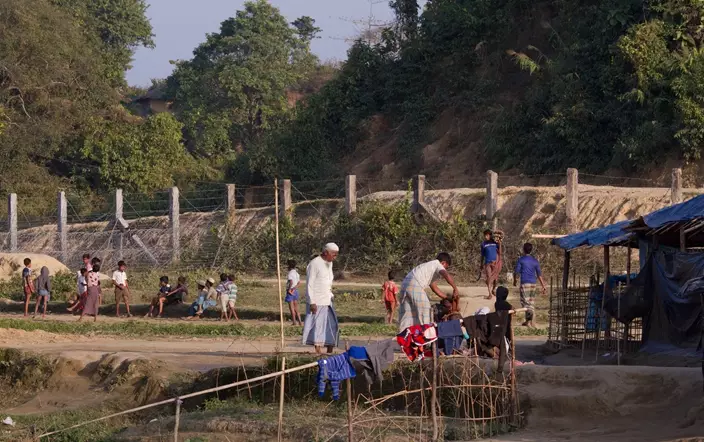
In this Tuesday, Jan. 23, 2018, photo, Rohingya refugees are seen next to the Bangladesh Myanmar border at Tumru, near Cox's Bazar, Bangladesh. Myanmar says it's ready for a gradual repatriation of Muslim Rohingya refugees chased out by the Buddhist-majority country's military. (AP Photo/Manish Swarup)
Sixteen years later, Younus found himself again fleeing for his life as Myanmar soldiers and Buddhist mobs unleashed a brutal retaliation after a Rohingya insurgent group attacked dozens of police posts on Aug. 25.
Under heavy international criticism of what U.N. and U.S. officials labeled "ethnic cleansing," Myanmar signed a repatriation deal with Bangladesh to start sending the refugees back this Tuesday.
According to the deal, those who return will first live in transit camps before eventually going back to their villages. But the plan has been delayed after a last-minute announcement by Bangladesh officials, who said they still have to draw up lists of refugees and complete the process of verification. They have not said how long the delay will last. They also reiterated that all returns would be voluntary.
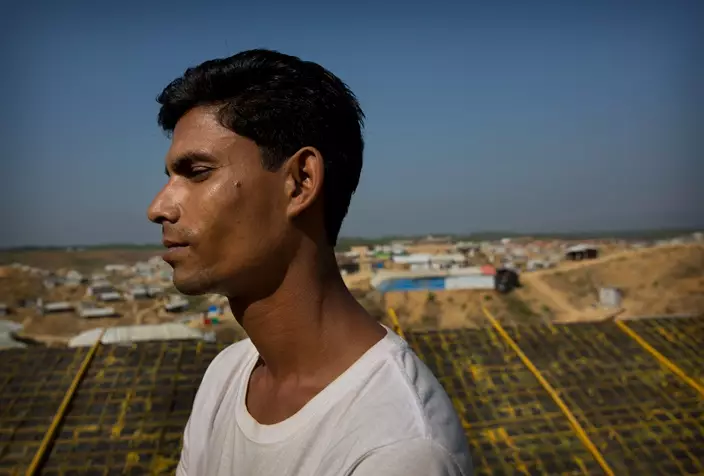
In this Tuesday, Jan. 23, 2018, photo, Mohammad Younus, 30, who is a second time refugee poses for a photograph at the BaluKhali refugee camp 50 kilometers (32 miles) from, Cox's Bazar, Bangladesh.(AP Photo/Manish Swarup)

In this Tuesday, Jan. 23, 2018, photo, Abdul Gaffar, 50, who has repatriated two times, sits in his small kiosk at BaluKhali refugee camp 50 kilometers (32 miles) from, Cox's Bazar, Bangladesh, Tuesday, Jan. 23, 2018. (AP Photo/Manish Swarup)
On Tuesday, Myanmar again promised it was ready to begin accepting the Rohingya. But the refugees say they have been on this road before.
"I kept going back because I still have love for my country in my heart," said Abdul Gaffar, a 50-year-old who fled spasms of violence in Myanmar in 1978, 1991, and last year.
"They take us back saying they will give us everything, but don't give us anything," he said. "They say they will meet our demands, but they don't. The government cheats us after taking us back."
The Rohingya trace their history before modern borders were drawn, and have long lived and traded on both sides of what is now the Myanmar-Bangladesh frontier. They have also long been a persecuted minority in Myanmar.
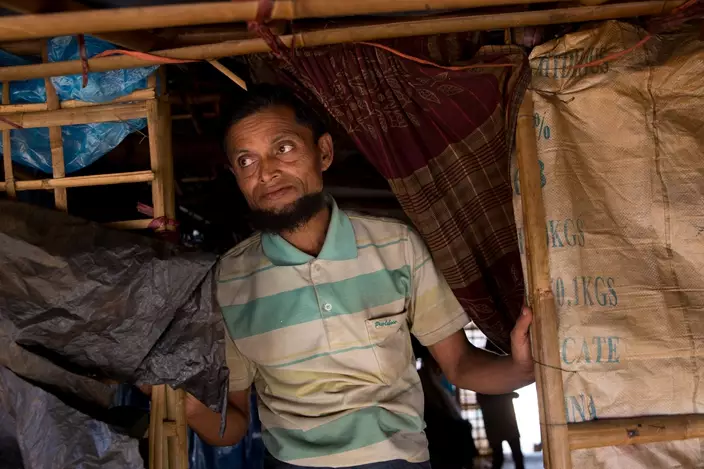
In this Tuesday, Jan. 23, 2018, photo, Abdul Gaffar, 50, who is a third time refugee stands in the doorway of his make shift shelter at BaluKhali refugee camp 50 kilometers (32 miles) from, Cox's Bazar, Bangladesh. (AP Photo/Manish Swarup)
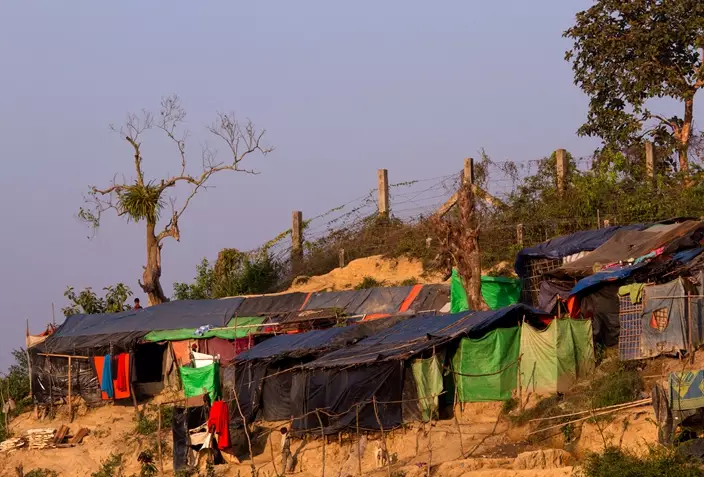
In this Tuesday, Jan. 23, 2018, photo, Rohingya refugees and their makeshift shelters are seen next to the Bangladesh Myanmar border at Tumru, near Cox's Bazar, Bangladesh. (AP Photo/Manish Swarup)
While the recent exodus of Rohingya has spawned one of the largest refugee crises in the world, smaller groups of Rohingya have been fleeing earlier waves of violence since the late 1970s. They are widely derided in Myanmar as "Bengalis," illegal migrants from Bangladesh, and have long been treated as outsiders by the Buddhist majority. In 1982, nearly all Rohingya were stripped of their citizenship rights.
Even if some Rohingya are able to return home, many probably won't recognize what they left behind. Rights groups have described how hundreds of villages across Rakhine state were set on fire after troops and mobs descended to chase out the residents. Homes and crops in the fields were reduced to ashes.
"They gave us back our land but didn't rebuild our home. This is how we have been living," said Younus, recalling when he and his family returned to Myanmar in the mid-1990s. The extended family lived in a small hut that they pooled resources to build, he said, only to abandon it when the attacks started last year.
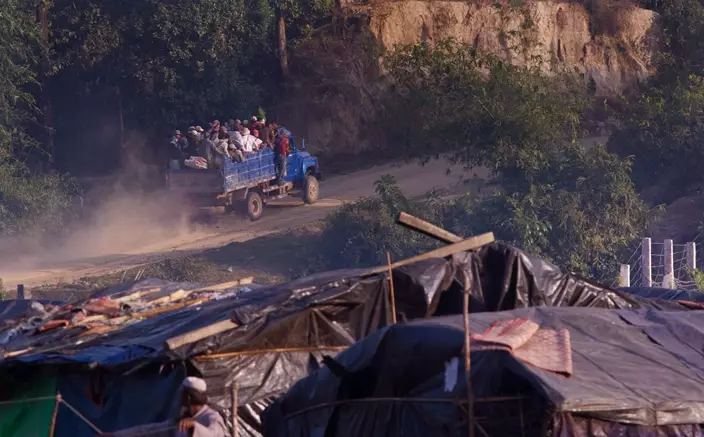
In this Tuesday, Jan. 23, 2018, photo, a Myanmar truck is seen carrying road construction workers huddled in its back, drives past Rohingya make shift shelters on the Bangladesh side at the Myanmar Bangladesh border at Tumru, near Cox's Bazar. (AP Photo/Manish Swarup)
"When the massacre began this time, when they started shooting and killing everyone, they were chasing after me as well," he said. "But somehow I managed to escape and come here. So I have experienced this ordeal twice. I have been in grief all my life."

In this Tuesday, Jan. 23, 2018, photo, Mohammad Younus, 30, who is second time refugee poses for a photograph at BaluKhali refugee camp 50 kilometres (32 miles) from, Cox's Bazar, Bangladesh.(AP Photo/Manish Swarup)
BANGKOK (AP) — Myanmar’s military has begun basic training at military bases and schools across the country for draftees called up under the country’s recently activated conscription law, state-run media reported on Tuesday.
The authorities activated the conscription law in February in a bid to to replenish the ranks that have been depleted in nationwide battles against ethnic minority armed groups and armed pro-democracy resistance forces opposed to military rule. The struggle began when the army seized power from the elected government of Aung San Suu Kyi in February 2021.
Over the past five months, the army has lost territory in northern Shan state and in Rakhine state in the west, and is under growing attack elsewhere. It appeared this week that it may also lose the important trading town of Myawaddy, in Kayin state on the border with Thailand.
Opening ceremonies for training were held in various regional commands and military schools in Mon and Shan states and Tanintharyi, Magway and Mandalay regions, as well as in the capital, Naypyitaw, the state-run Myanma Alinn newspaper reported Tuesday.
It said the first batch of trainees were those who voluntarily reported to the army after the military government sent letters summoning them.
The conscription law’s activation has created fear, anxiety and defiance among young people and their parents. Some are leaving the country, while others are fleeing into border areas controlled by ethnic minorities or joining resistance groups.
Independent Myanmar media reported Tuesday that a few young people staged brief protests against conscription at three locations in Yangon, the country’s largest city. The protests on Monday were carried out as flash mobs to evade attacks or arrests by the authorities.
Under the law, men aged 18 to 35 and women 18 to 27 can be drafted into the armed forces for two years. The military has said about 14 million men and women of the total 56 million population of the country are eligible for military service and it will draft 5,000 people at a time and up to 60,000 people a year. Evading conscription is punishable by three to five years in prison and a fine.
Myanmar’s military is also reportedly tapping an unlikely source to fill its depleted ranks, turning to members of the the Muslim Rohingya minority, who seven years ago were the targets of a brutal counterinsurgency campaign incorporating rape and murder that saw an estimated 740,000 flee to neighboring Bangladesh as their villages were burned down.
Analysts say the move is meant not only to counter the army’s attrition though deaths, desertions and defections, but also constitutes a divide and conquers strategy meant to reignite tensions between ethnic groups in Rakhine.
Rohingya have lived especially in Rakhine for generations, but they are not officially recognized as an indigenous ethnic minority, instead being called Bengalis and described as illegal immigrants. They have been denied citizenship and other basic rights including freedom of movement, and are the targets of widespread social discrimination. The U.N. has estimated that 600,000 Rohingya are still living in Myanmar.
The main anti-military resistance force in Rakhine state is the Arakan Army, which is part of the movement seeking greater autonomy for the Rakhine ethnic group that dominates the area. Rakhine nationalists were among the leading persecutors of the Rohingya minority, but now the Arakan Army and the Rohingya have a common enemy in the military government to took power in 2021, making them uneasy allies.
Aung Kyaw Moe, a Rohingya who is deputy minister for human rights in the shadow National Unity Government, said last month that the military is creating a conflict between the Rohingya and Rakhine ethnic groups in hopes of regaining the military advantage in Rakhine.
“The military council is losing the battles nationwide. Especially in Rakhine, military camps are being abandoned almost every day, and the towns controlled by the military council are falling. In Rakhine, the military council is in need of a lot of human resources due to the depletion of the army. It seems that they have calculated that only by creating a conflict between Rakhine and Rohingya can the current situation be changed,” Aung Kyaw Moe said.
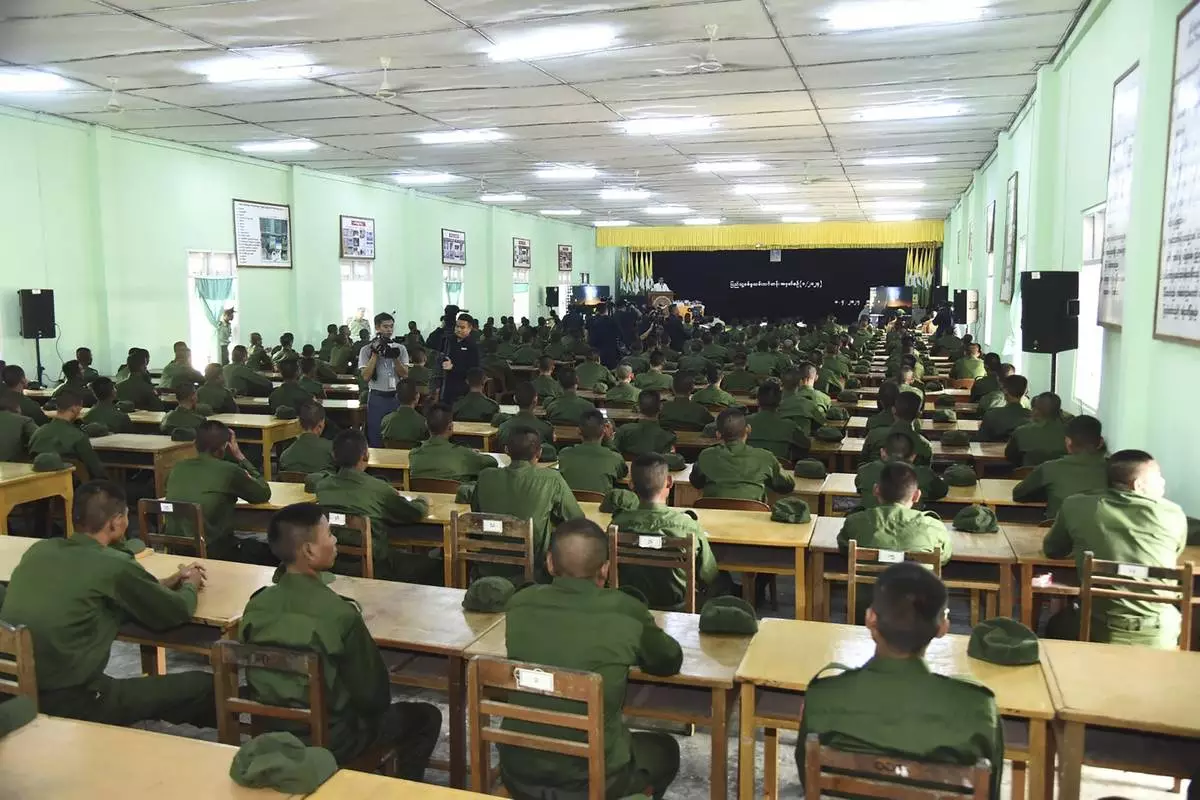
In this undated photo released on April 8, 2024 by The Military True News Information Team, trainees of first batch of military service attend an opening ceremony for their training session at a military compound in Mandalay, Myanmar. Myanmar’s military has begun basic training at military bases and schools across the country for draftees called up under the country’s recently activated conscription law, state-run media reported on Tuesday, April 9.(The Military True News Information Team via AP)
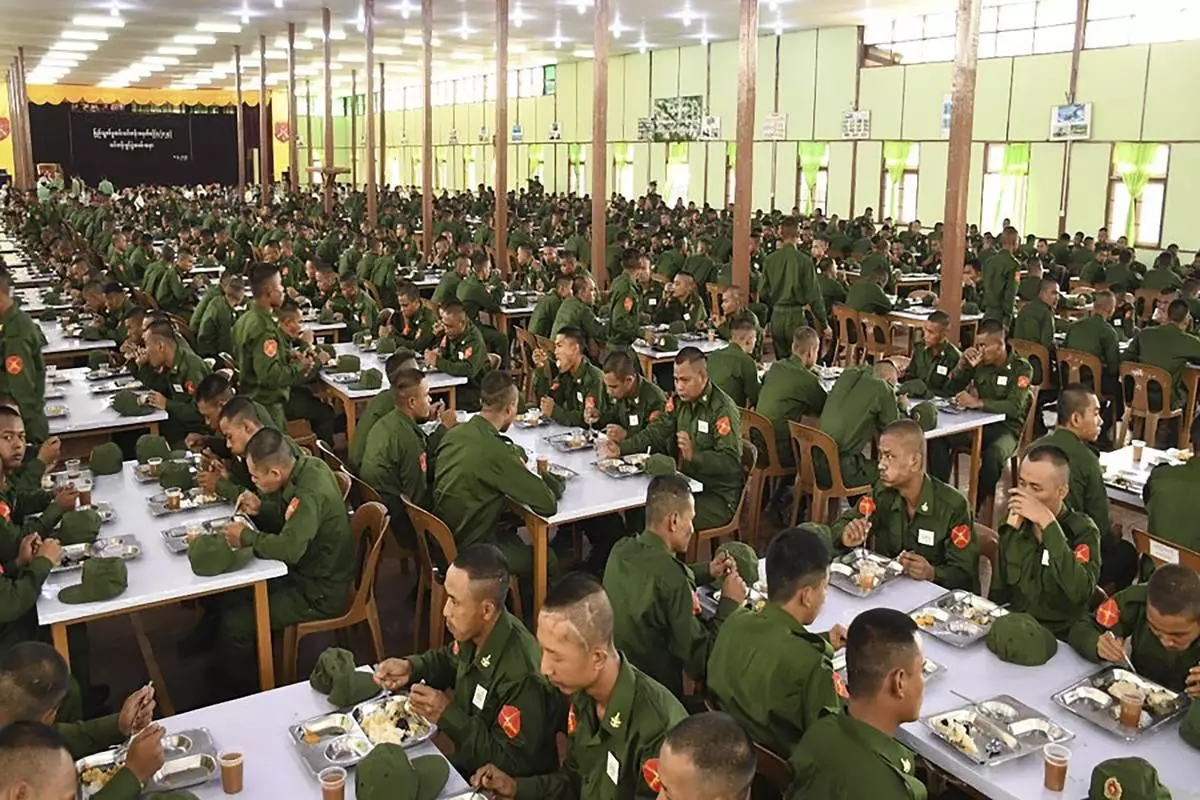
In this undated photo released on April 8, 2024, by The Military True News Information Team, trainees of first batch of military service have meals as an opening ceremony for their training session was held at a military compound in Yangon, Myanmar. Myanmar’s military has begun basic training at military bases and schools across the country for draftees called up under the country’s recently activated conscription law, state-run media reported on Tuesday, April 9.(The Military True News Information Team via AP)
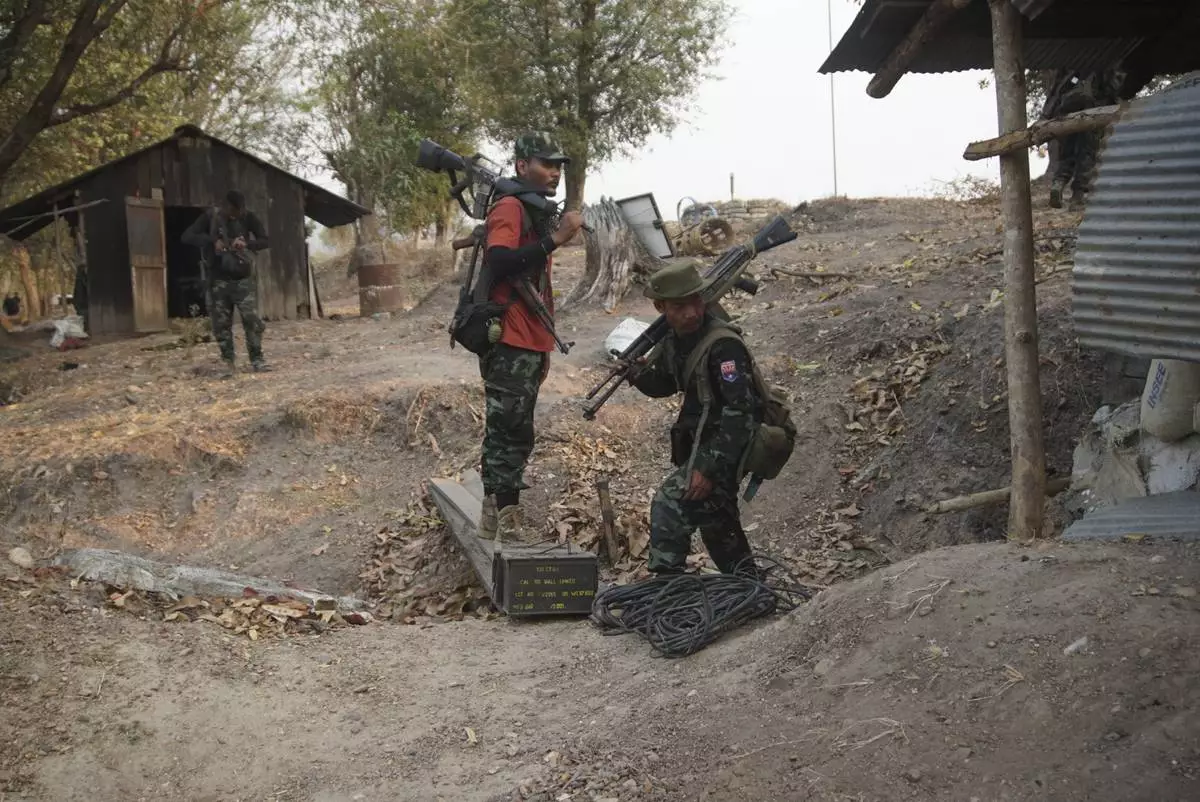
Members of the Karen National Liberation Army and People’s Defense Force collect weapons after they captured an army outpost, in the southern part of Myawaddy township in Kayin state, Myanmar, March 11, 2024. (AP Photo/METRO)
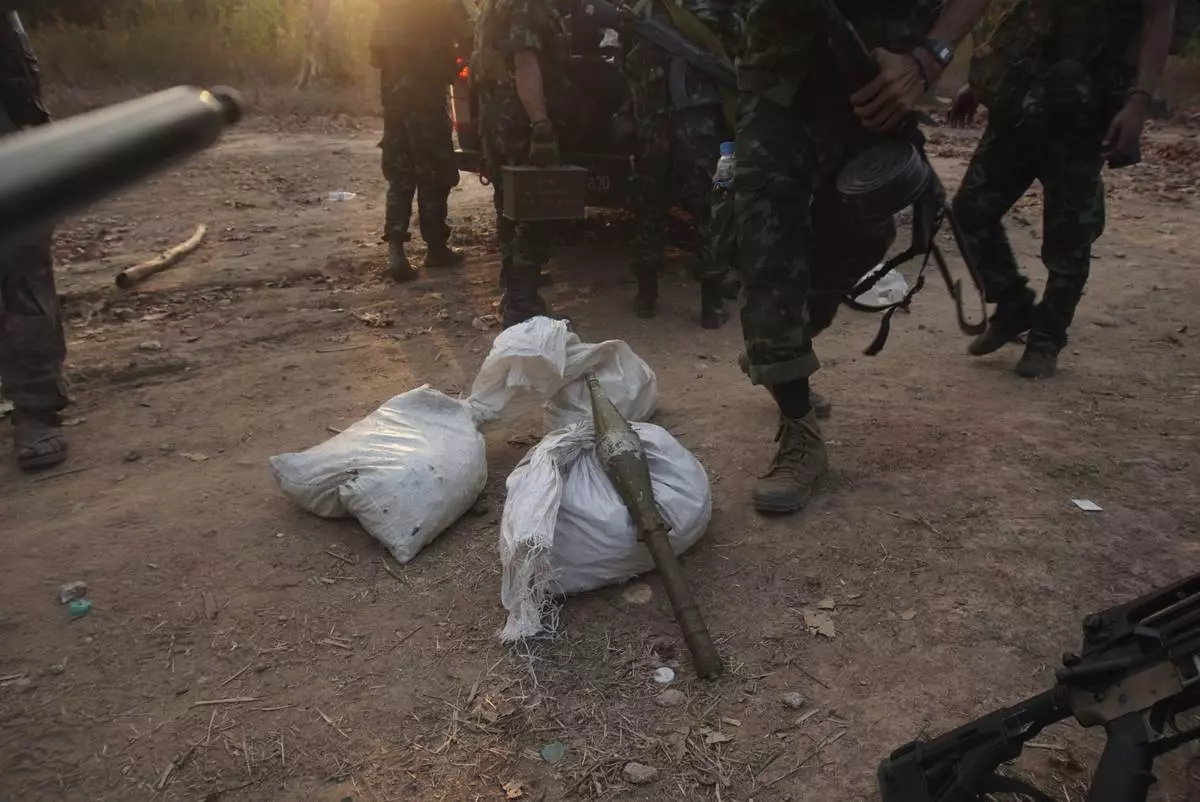
Members of the Karen National Liberation Army and People’s Defense Force collect weapons after they captured an army outpost, in the southern part of Myawaddy township in Kayin state, Myanmar, March 11, 2024. (AP Photo/METRO)
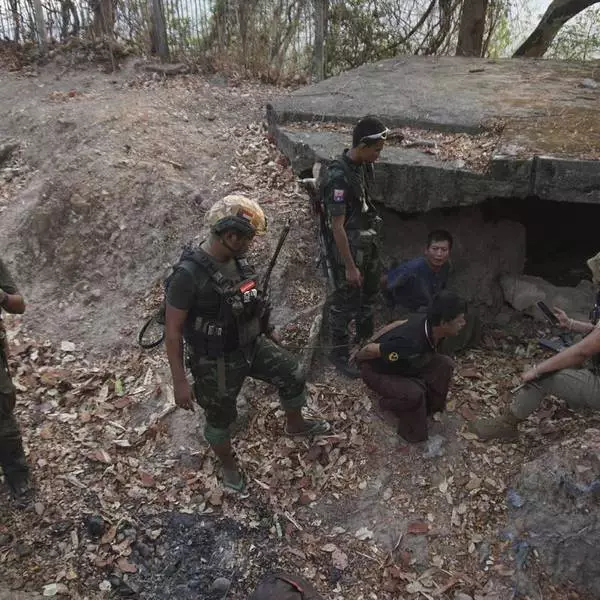
Myanmar military begins basic training for draftees as resistance forces keep the pressure on
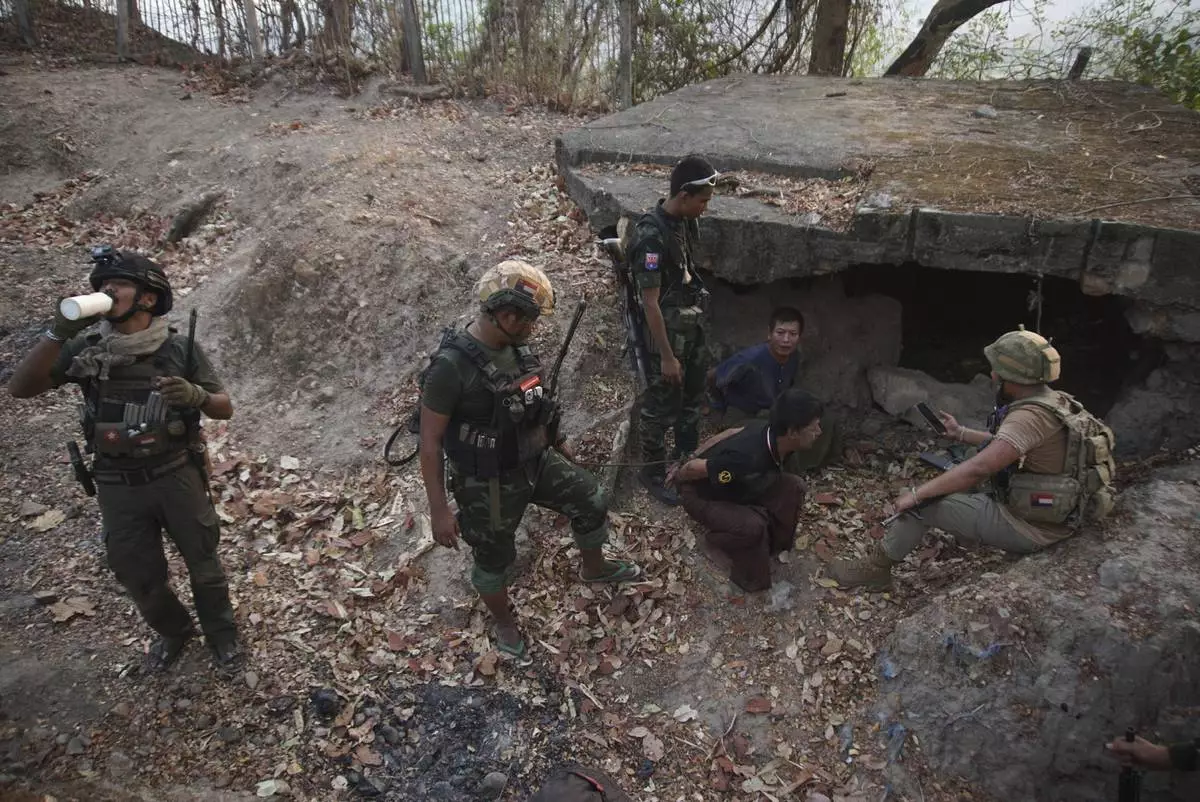
Members of the Karen National Liberation Army and People’s Defense Force examine two arrested soldiers after they captured an army outpost, in the southern part of Myawaddy township in Kayin state, Myanmar, March 11, 2024. (AP Photo/METRO)
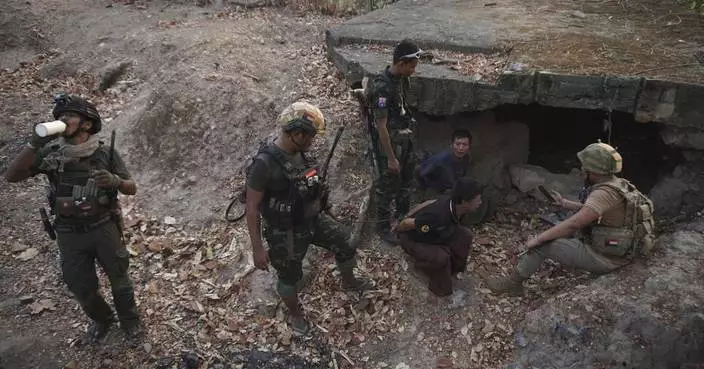
Myanmar military begins basic training for draftees as resistance forces keep the pressure on



















